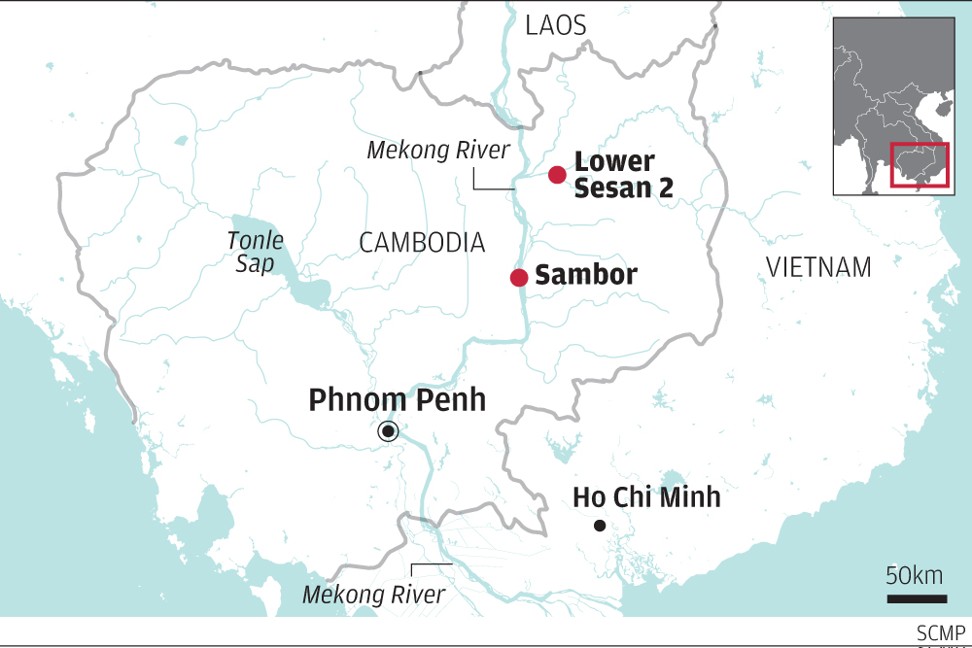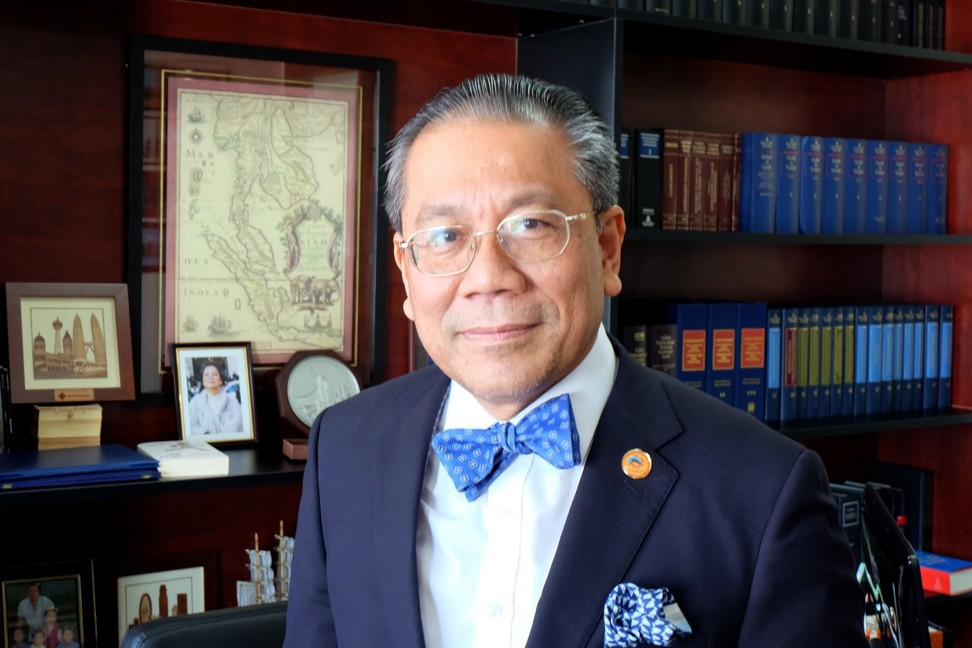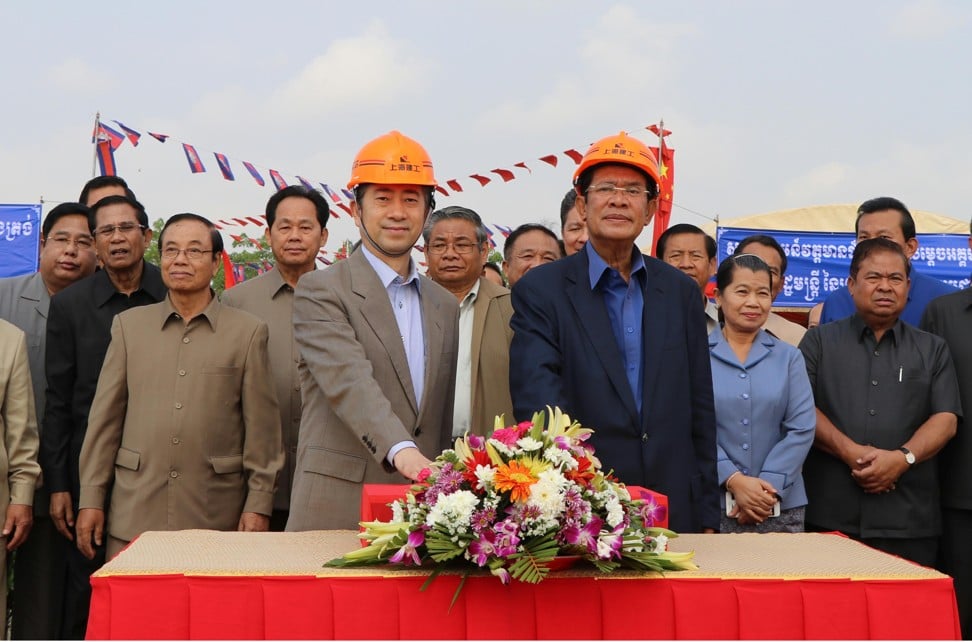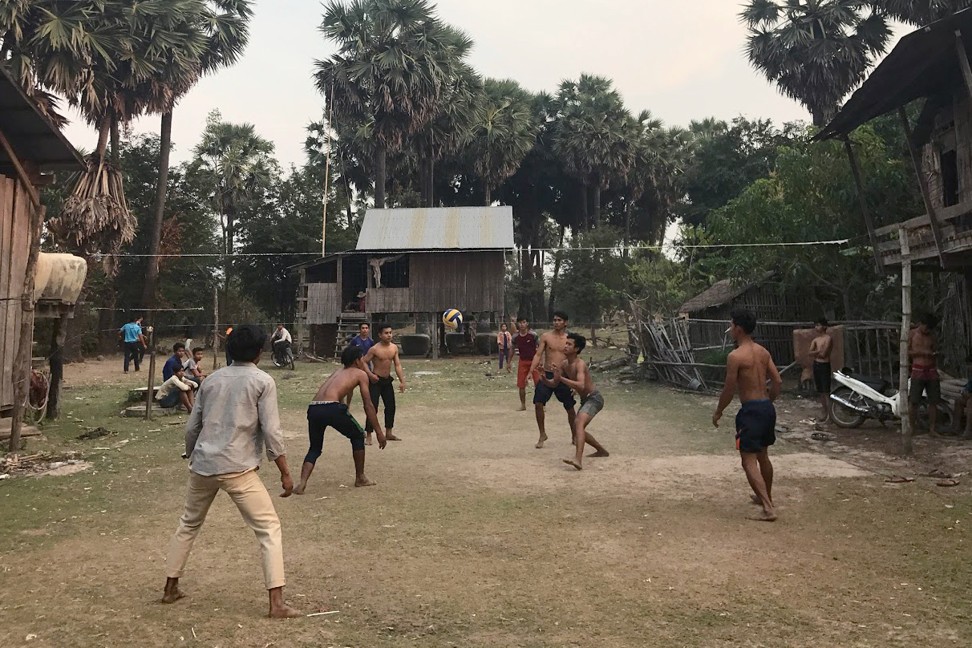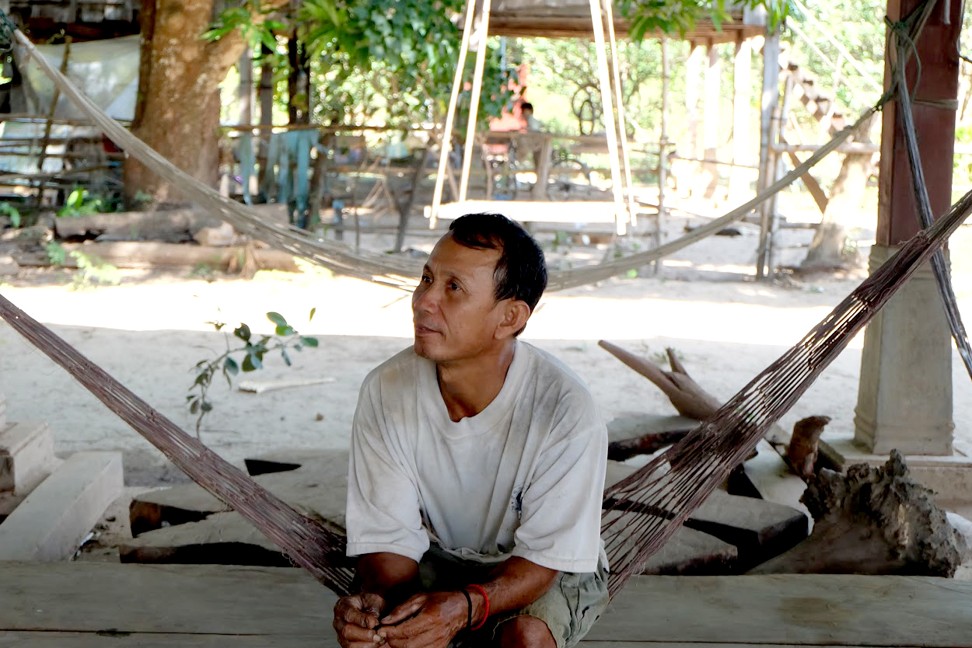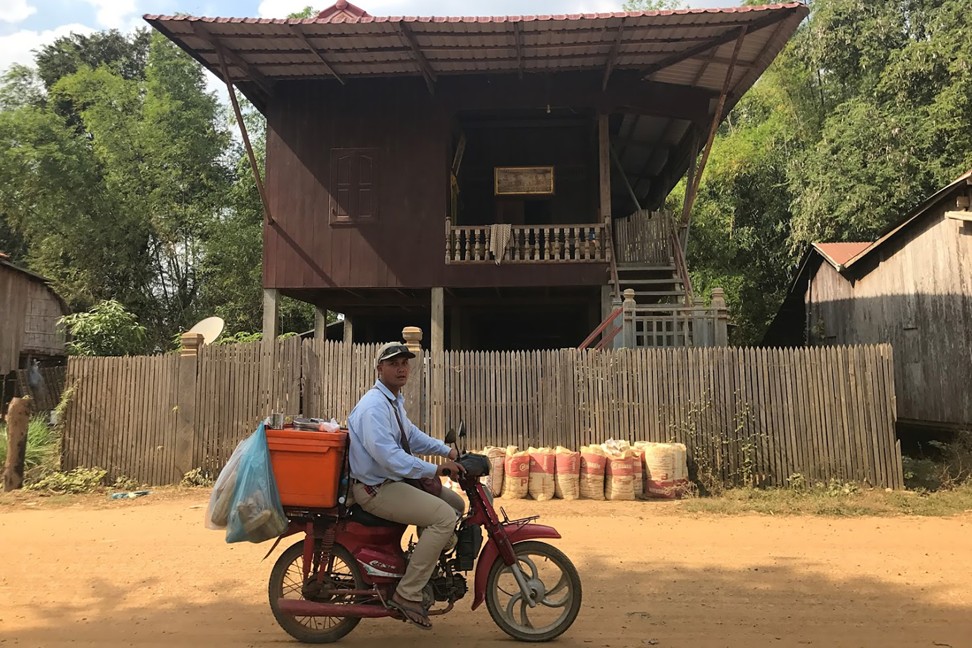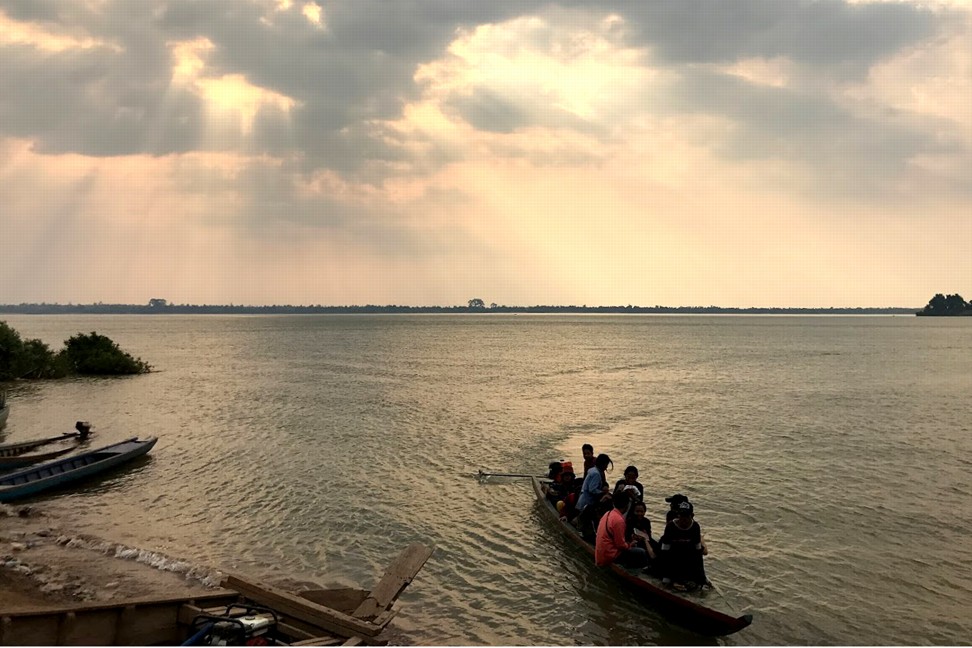
Are Chinese-funded dams on the Mekong River washing away Cambodian livelihoods?
Beijing’s spending on hydropower projects is welcomed by many poorer Southeast Asian countries, but it comes with a huge environmental and social cost, experts say
Like many other people living near the Mekong River and its tributaries in Cambodia, Khmer farmer Srey Ly Bik regards the waterways as life-sustaining.
Separated from his family during the Khmer Rouge’s brutal reign in the late 1970s, Srey Ly Bik travelled from place to place with a team of doctors, picking up rudimentary medical skills along the way, until he found his father in Kbal Romeas village on a bend of the Srepok River, a Mekong tributary, in 1979.
He met his wife there and they had six children. Thanks to the nutrient-rich sediment carried downriver, the soil was fertile and he was able to grow rice and vegetables.
But he had to leave in August 2015 after the government announced that his old village and a few nearby ones were part of the 75 square kilometres (29 square miles) to be flooded by the building of Cambodia’s biggest dam, the Lower Sesan 2.
“I went back to the old area a few days ago just to check the water level, and my old home has been totally inundated and I can’t even recognise where it is now,” Srey Ly Bik said.
He said he had sold all his property, including 30 buffaloes and a tractor, because he was too old to farm the rocky soil in the area he had moved to.
The US$816 million Lower Sesan 2 Dam, a 400 megawatt hydropower project, is one of the symbols of China’s growing influence in Indochina as it builds infrastructure for poorer Southeast Asian countries.
Under President Xi Jinping’s “Belt and Road Initiative”, a cornerstone of China’s foreign policy and its pursuit of national rejuvenation, Beijing is seeking to transform transport and trade links across Eurasia and Southeast Asia through massive infrastructure investment.
“China believes that roads have to be built before making money, and this is a way of development China wants to introduce to the rest of the world through the ‘Belt and Road Initiative’,” said Hu Zhiyong, an associate professor at the Shanghai Academy of Social Sciences. “Once successful in Southeast Asia, such a pattern, a key part of the ‘Belt and Road Initiative’, could be introduced to other places, such as Africa and South America.”
On Saturday, the six nations through which the Mekong flows adopted an ambitious investment plan to develop 227 projects worth US$66 billion over the next five years. The deal was agreed at a summit in Hanoi by the prime ministers of Vietnam, Cambodia, Laos and Thailand, the vice-president of Myanmar and China’s foreign minister.
Stephanie Jensen-Cormier, China programme director of the California-based NGO International Rivers, said Chinese hydropower companies were building 41 dams in Southeast Asia.
“That’s a lot of projects and environmental and social impacts are therefore quite significant,” she said.
Such investment could be appealing to countries like Cambodia, the poorest member of the Association of Southeast Asian Nations, which was occupied by Vietnam for a decade after the fall of the Khmer Rouge.
Cambodian officials say the Mekong River’s hydropower potential could be a magnet for investment and help to pull the country’s people out of poverty.
“The difficulties of an emerging post-crisis country, even though it’s 20 years later, is that we have difficulties competing if we don’t have the necessary infrastructure,” said Sok Siphana, a lawyer and adviser to the Cambodian government, “To me, infrastructure matters … if electricity charges are much higher than your neighbours and you happen to be a small market, not like Vietnam, Thailand or Myanmar.
“To us, competitiveness is how to reduce the cost of doing business and electricity is probably the biggest winning factor.”
But to people like Futh Kheun, a 39-year-old Lao whose family had lived in Old Srekor village for generations, the construction of the dam meant that land, property, traditions and culture were literally washed away.
Together with 66 other families from the village, Kheun refused to relocate. Instead, he moved to higher, forested ground, from where he could see the water rise, inundating the old village.
Kheun said he viewed the dam project as a deal between the elites of the two countries, with little consideration for the local people.
“In other countries that have no rivers, no water resources, they still have electricity, but for our country, we have everything, we have coal, rivers, and water,” he said. “Why did people prioritise a dam for electricity? The construction of the dam is causing suffering to local people.”
China is Cambodia’s largest foreign aid donor and biggest investor, but Cambodian sentiment towards China can be negative. People in the cities complain about rude Chinese tourists flooding scenic sites and the poor quality of Chinese-made goods, while people in rural areas worry about Chinese investors taking away the natural resources they rely on.
Leang Bunleap, executive director of the 3S Rivers Protection Network in Stung Treng province, where the Lower Sesan 2 Dam is situated, said many Chinese investors failed to consider local concerns but always sought good relations with the government, which could trigger a popular backlash.
“Chinese investors seem to encourage government to continue to provide licences to these projects such as mining, economic land concession and coal energy because they say that could help to increase income, develop the economy and provide more jobs, but that’s not for all people as some are now forced to leave their homes and the environment is damaged,” Leang Bunleap said.
There have been painful lessons for Chinese investors elsewhere in Southeast Asia.
Myanmar’s government announced seven years ago it was suspending construction of the US$3.6 billion Myitsone Dam at the head of the Irrawaddy River because of environmental concerns following strong opposition from the public.
And in Cambodia in 2015, Cambodian Prime Minister Hun Sen, a close friend of Beijing, ordered the suspension of the China-backed Chhay Areng hydropower dam in the southwestern province of Koh Kong until this year a bid to stem growing opposition.
As China expanded its investment around the world, local backlashes seemed to be becoming more common, especially in Southeast Asia, Africa and South America, said Ren Peng, an expert on Chinese overseas investment with the Global Environment Institute, a Beijing-based NGO that advocates sustainable development.
Unlike their Japanese or Western counterparts, which often adopted a “two-pronged approach” that took care of the needs of governments and local people, Chinese companies tended to make relations with government officials the priority, while ignoring the real needs of local people.
“Unlike in China, where government is the only policymaker, in Southeast Asia, government is often questioned by the people,” Ren said. “The closer the investor gets with the government, the more opponents there are.”
About 140km (87 miles) south of the Lower Sesan 2 Dam, on Kaoh Real, an island in the middle of the Mekong in central Cambodia’s Kratie province, Loeurn Sitha grows rice and vegetables that are popular in the market in the riverbank village of Sambor, all thanks to the nutrient-rich sediment carried downriver.
Like Srey Ly Bik, Loeurn Sitha fled his hometown during the reign of the Khmer Rouge. He has called the island home since 1994.
“The soil here is the really good, and it’s quite easy living here,” the 50-year-old said as buffaloes and cows wandered through paddy fields reduced to stubble after the rice harvest.
When some Chinese showed up on the island about 2007, villagers in Kaoh Real and Sambor began to worry.
“I heard from other people that they wanted to build a dam here, but nothing was specific,” Loeurn Sitha said. “I don’t want to move, I don’t want to move to another place.
“I don’t know about other people, but for me I don’t want compensation, as I have everything here. If I moved, I would lose everything.”
With little information from the local government, public discussion of the proposed dam and any Chinese involvement in the project seemed to be taboo. A local official, who refused to be identified due to the sensitivity of the topic, said any decision to go ahead with the dam would have serious implications because it would be the Mekong mainstream dam closest to the coast, and the largest in Cambodia.
Some Sambor villagers said they had been asked their opinions about the dam project as recently as early January.
In 2006, China Southern Power Grid signed a memorandum of understanding with the Cambodian government to carry out a new feasibility study for the Sambor dam, which was first proposed in the 1950s. But the Chinese company withdrew from the project in 2011 after conducting a geological study of the site, saying it was doing so because it was “a responsible company”.
From the Cambodian government’s point of view, the sale of electricity from the dam would be an important source of income, with plans to sell 70 per cent of the power to Vietnam and 10 per cent to Thailand.
The Lower Sesan 2 Dam is joint venture in which China’s Huaneng Hydrolancang International Energy, a subsidiary of Huaneng Group, holds a 51 per cent stake, Cambodia’s Royal Group 39 per cent and Vietnam’s EVN International Joint Stock 10 per cent.
It is billed by Huaneng Group’s website as “another fruit of the Belt and Road Initiative” and a “window project” for its future investment in Southeast Asia.
Once in full operation, the dam would be able to generate an estimated 1.97 billion kilowatt-hours of hydroelectric power each year for use in Cambodia, which could “significantly decrease electricity costs and have enormous meaning for Cambodia’s economic development”, the website said.
The company also said that to benefit those relocated to make way for the dam, it had built roads, new resettlement villages and schools to improve their livelihoods.
Still, Thun Phann wonders whether her decision to relocate, reached after years of struggle, was the right one. Last year she became the last person to move into a resettlement village, where she now lives with her husband and 16-year-old son.
She and her husband farm new land assigned to the family, but the fish she can catch after tending to the fields are too small to sell for a good price in the market, and she instead cuts wood in the forest to supplement their income.
And living in the new village, where the water in the well near their house is not fit for drinking, has increased the family’s expenses. Without water supplies from the river, Thun Phann has to pay US$15 a month for bottled water.
She also pays about 75 US cents per kilowatt for electricity, even though the developers of the dam told villagers power would be free for the first three years after they moved.
Thun Phann said she was happy to see that a hospital had been built in the new village, but soon realised she needed to pay for medicine too, despite a promise from the developers that they would not be charged in the first year.
“The developers never showed up, probably fearing we would raise all these problems,” she said.
Thun Phann said she missed the water most.
“I’ve lost water and river,” she said. “I didn’t want to move, but I couldn’t do anything about it.”
Hu said Chinese companies needed to carefully address the impact of their investment on local people and the environment when promoting belt and road projects, and they were learning how to do that.
“If that can be overcome, Chinese investment would benefit more,” he said.



